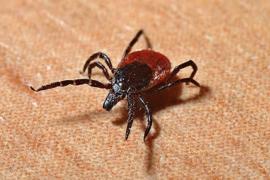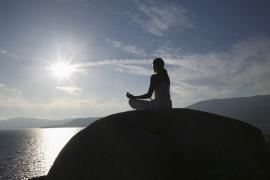Updated July 17 with new handouts.
Handwashing remains one of our most effective protective behaviors against communicable disease. While handwashing doesn’t guarantee protection and safety, a person can certainly reduce risk of exposure. That protection, however, is directly tied to how well a person washes their hands. Here are tips to make your handwashing as protective as possible.
According to the CDC (2019), handwashing is most protective when done:
- Before putting something in your mouth, eyes, or nose
- After toileting
- After coughing/sneezing — even if you used a facial tissue or “did it in your sleeve”
- Before and after providing care to someone (e.g., changing their clothing; helping them bathe/shower or eat; giving them medication or food/fluids)
- Before, during, and after preparing food
Wash your hands with soap and water, and keep the dear things away from your face! Link those two behaviors forever.
Because both beneficial and potentially harmful microbes are on our hands, handwashing alone isn’t protective unless we keep our hands away from our faces and other body openings. Yes, germs collect on our hands, but they can’t do much there. They become impactful when we transfer them by bringing our hands to our face (that is, provide a “portal of entry”). Work on keeping your hands from touching your face.
- One camp played “Gotcha” to emphasize this point. For one day, counselors traveled around camp with washable markers in their pockets and used that to draw “contamination dots” on the faces of anyone — camper or staff member — caught touching their faces. Then, following supper, they debriefed the event and celebrated anyone with a clear face.
- Early one morning, another camp used a fluorescing substance to “contaminate” commonly touched camp surfaces like the coffee pot handle, doorknobs, and countertops. Then, at breakfast, the camp nurse said to everyone: “A respiratory illness is going around; a staff member is already sick. This illness is spread by contact, so I want you to be especially careful to wash your hands today and keep them away from your face.” At lunch, the nurse updated the group: “Two campers are now sick too. You’ve got to remember to wash your hands — frequently and well — and keep them away from your face.” Then, as campers and staff came for supper, the nurse and a few helpers used a black light to screen people (fluoresce for contamination). Those who fluoresced around their mouth or eyes sat at one table; they were sick. Those who fluoresced but only on their hands sat at different tables; they were “contaminated” but not ill. Some people didn’t fluoresce at all; they sat as a “healthy, not sick” group. Needless to say, the resulting discussion brought home the point about effective handwashing coupled with keeping one’s hands away from one’s face.
Check GloGerm.com. This company has the substance in various forms and provides educational resources.
When handwashing, scrub where microbes enjoy lurking. Sometimes we don’t scrub everywhere. We wash our palms, but often neglect:
- Between fingers
- Under rings
- The back of our hands
- Fingernails. These benefit from using a fingernail brush. Get one — or maybe even one for every person to minimize cross-contamination.
Wash long enough to make a difference. Evidence indicates that a 20-second, soap-and-water scrub is minimal. That’s longer than singing the “Happy Birthday” song. Time yourself. Sing it two or three times.
Washed hands should be rinsed in clean, running water. Plunging one’s hands back into a basin of used water recontaminates hand surfaces. In addition, the water’s temperature can range from cold to quite warm. Temperature doesn’t make a difference; scrubbing with soap does.
- Consider how this might impact out-of-camp trips too.
There’s some evidence that using soap from a pump dispenser is better than grabbing a bar of soap that’s been sitting around who-knows-how-long and/or used by who-knows-whom. A personal bar of soap can harbor microbes, but these usually don’t make one ill because they’re sloughed off as the bar is used. Besides, the bar is personal. You know those microbes.
While using a personal towel to dry one’s hands may be fine at home, in public settings — like camp bathrooms — reach for a paper towel (Novella, 2018). These single-use items aren’t contaminated by others and people tend to use them long enough to actually dry their hands. That beats alternatives like rubbing wet hands against one’s contaminated clothing.
- Air dryers might be appropriate depending on the dryer’s source of air. Pulling air from the bathroom with its aerosolized microbes is quite different than using air pulled from mother nature’s great outdoors. Bottom line: go for the paper towels.
Not all hand sanitizers are created equal. Based on CDC (2020) information, washing with soap and water is preferred, but, when that’s not possible, hand sanitizers may be useful with these points in mind:
- The sanitizer should contain at least 60 percent alcohol. This often reduces the number of germs but does not, necessarily, eliminate (kill) them.
- Sanitizers are meant to be used in sufficient quantity (read the directions to know how much) and hands should be rubbed until the sanitizer dries.
- Sanitizers aren’t good at removing grease and/or dirt. Grime on one’s hands reduces the sanitizer’s effectiveness.
- Can’t find any hand sanitizer to buy? Want to make your own? Don’t. Yes, hand sanitizer recipes are online, but soap and water is best! Having campers and staff take time to wash their hands with soap and water might delay lunch for five minutes, but that’s better than eating with contaminated hands.
Pathogens like COVID-19, norovirus, and even the common cold are driving continued research in topics like handwashing. That means the topic is a moving target; we’ll learn more given time. Consequently, keep yourself connected to reliable resources such as the CDC and informed partners like ACA and ACN.
References
CDC (2019). When and how to wash your hands. Retrieved from cdc.gov/handwashing/when-how-handwashing.html.
CDC (2020). Show me the science – When and how to use hand sanitizer in community settings. Retrieved from cdc.gov/handwashing/show-me-the-science-hand-sanitizer.html.
Novella, S. (2018). Air dryers vs. paper towels. Retrieved from sciencebasedmedicine.org/air-dryers-vs-paper-towels/.
Handwashing Flyers
Print out the following downloadable handouts and hang them up around your camp as a reminder to campers and staff of the proper handwashing process.
The views and opinions expressed by contributors are their own and do not necessarily reflect the views of the American Camp Association or ACA employees.




